Santa Monica Municipal Airport (SMO)
Santa Monica Municipal Airport (SMO) is a small business and general aviation airport located in the city of Santa Monica, CA. The airport is situated five miles north of Los Angeles International Airport (LAX) and 11 miles south of the Van Nuys (VNY) and Burbank (BUR) airports. This puts SMO in some of the most densely traveled airspace in the country. The SMO Class D airspace underlies Los Angeles Class B airspace. The airspace between these classes is utilized for the Special Flight Rules Airspace and others including the LAX “Mini Route." The airport is also subject to numerous noise abatement procedures. View a printable Pilot Handbook of the SMO information found on this Web page.
Know Before You Go
The airport configuration is a single 3500’ RWY 3/21 with parallel TWYs extending beyond the RWY thresholds on each end.
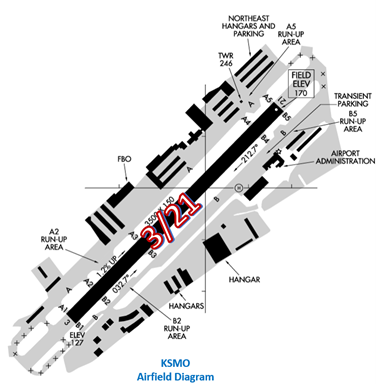
The airspace at SMO is Class D and underlies Los Angeles Class B airspace. (Refer to Sectional Chart)
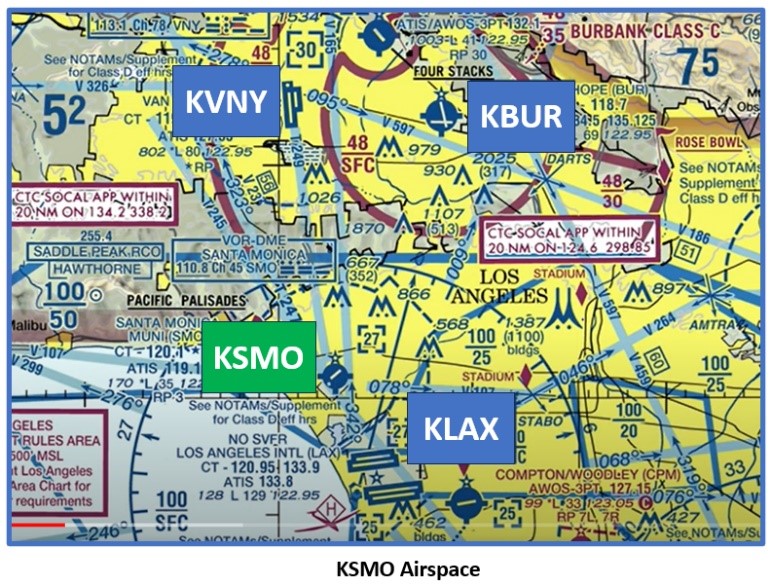
SMO Tower Hours of Operation 0700L-2100L
Administrative Office Open 0700L to 1530L M-F
Business Phone 310-398-1525
Below find various SMO-specific information and things to be aware of, as well as general information to inform your preflight planning. This will be reviewed quarterly and updated as needed. This information is to supplement the From the Flight Deck Videos that are produced by the FAA Runway Safety Group. Here you will also find information provided by the local air traffic controllers at the airport where you intend to fly. The information is subject to change. Not for navigation or legal* pre-flight action. Always refer to official pre-flight materials such as, but not limited to, NOTAMs, airport diagrams, VFR charts and airport construction notices for the latest airport-specific details.
Hot Spots
- There are no Hotspots.
Surface Risk – Movement Area Cautions
- The surface of SMO is one large pavement area. RWYs and TWYs are delineated using painted surface markings, above ground signage and flush mounted lights.
- SMO has numerous non-movement areas.
- All pedestrians, vehicles, or aircraft must obtain clearance from TWR or Ground Control (GC) to entering a movement area.
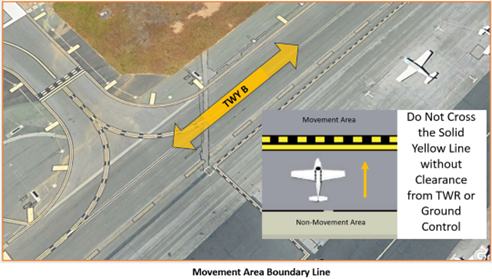
- It is sometimes necessary to hold aircraft on TWYs that are in the approach area of the RWY so that aircraft do not interfere with inbound traffic.
- There are four Approach Holding positions on the airfield - two each on TWYs A/B.
- TWR/GC will issue instructions when it is necessary to hold short at any of these positions.
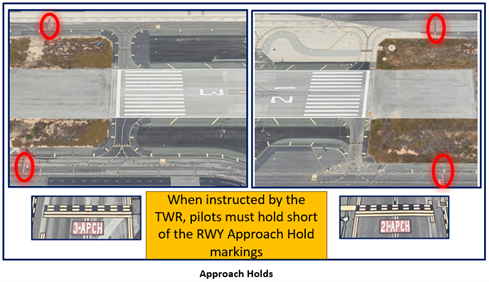
- The airport vehicle service road mostly runs adjacent to the ramp areas.
- Pilots need to be aware of vehicles operating on the roadway.
- Black and white zippered lines or solid white lines identify the roadway.
- Vehicles are instructed to give way to aircraft, but pilots should be aware of vehicles and always maintain situational awareness while taxiing on the airport surface.
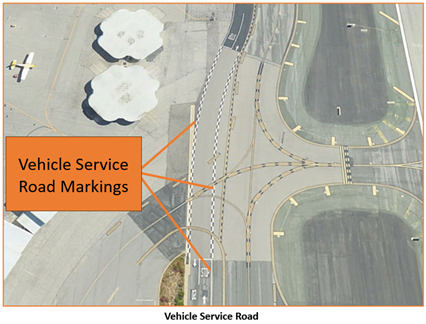
Additional Cautions
- The paved areas preceding the RWY 3/21 thresholds are not available for landings, take-off, or taxiing.
- These areas are now blast pads created from threshold relocation and RWY length reduction
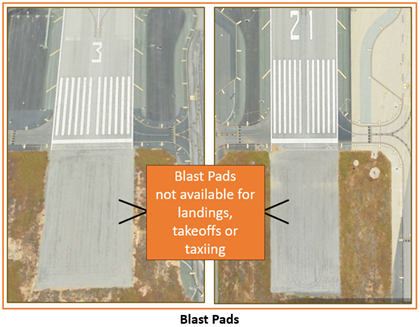
General
- Pilots should familiarize themselves with the noise-abatement procedures found on the City of Santa Monica Airport website by searching the “Fly Neighborly Program.”
- Intersection departures and formation landings/departures are not allowed.
Traffic Patterns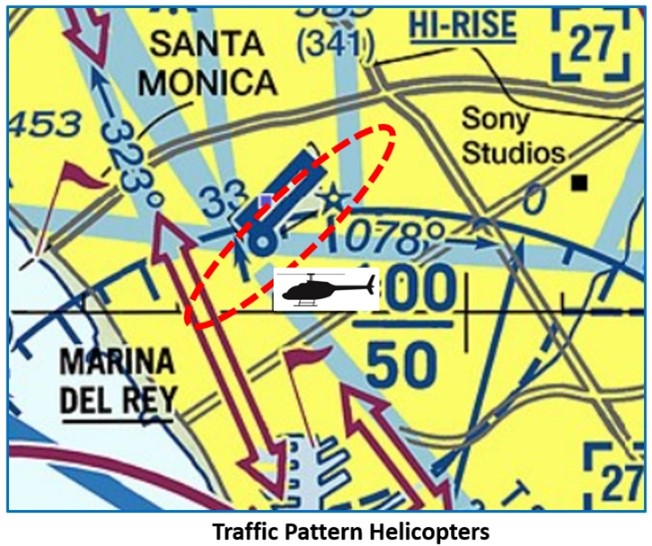
- SMO traffic pattern altitudes are 1,400’ for single-engine aircraft and 1,900’ for twin engine/jet aircraft.
- When in RWY 21 left-closed traffic, be vigilant for helicopters transitioning SMO Class D airspace northeast of Marina Del Rey. Helicopters are required to cross at or above an altitude of 900’, while SMO pattern traffic is instructed to maintain 1400’.
Ground Control
- There are four run-up areas available that do not require special permission to use, all of which are in the Movement Area. Other run-up areas must be approved prior to use.
- Do not cross the Movement Area Boundary Marking unless you have received clearance to do so.
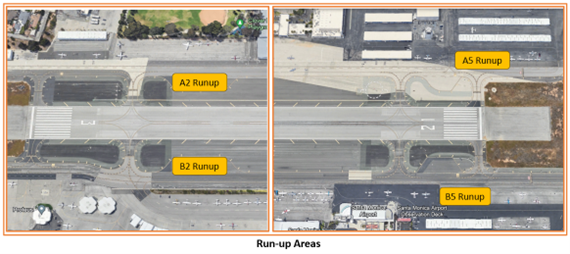
- Contact GC on 121.9 to advise run-up complete and for taxi/sequence instructions.
Runway Crossings
- Read back ALL hold short instructions with runway assignment and callsign.
Takeoff/Departure
- For Non-RNAV RWY 21 Departures: Please be advised that the procedure is to climb to 1,000’ via runway heading, and then turn to the TWR assigned heading.
Arrival/Landing
- We recommend calling the tower on 120.1 prior to descending from the Special Flight Rules corridor from 4,000’ so that we may advise of potential traffic at 3,500’.
Special Traffic (Military / Commercial / Helicopter, etc.)
- Check NOTAMS for frequent Temporary Flight Restrictions (TFR) issued in the SMO area.
Additional Information
- SMO ATCT does not have any single frequency listed for SoCal Departure Control. We often instruct pilots to expect frequency assignment based on their airborne track once airborne.
